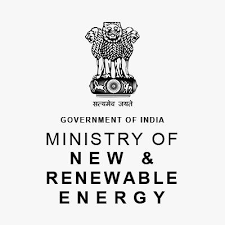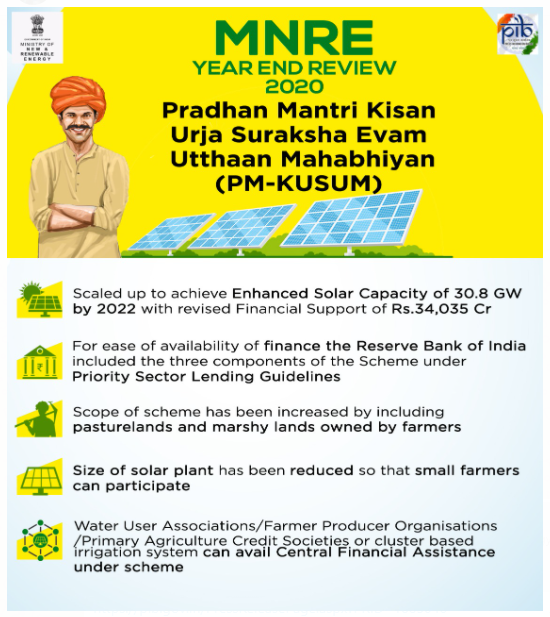CURRENT AFFAIRS
Get the most updated and recent current affair content on Padhaikaro.com
PM-KUSUM Scheme
- Vaid's ICS, Lucknow
- 13, Jan 2022

In News
- Under the PM-KUSUM scheme, Solar power generation is set to make rapid strides in Rajasthan.
- The work was earlier affected as the farmers faced difficulty in getting bank loans
- Now, the public sector banks acceding to the State government’s request to grant loans without collateral security to farmers for installing solar plants on their infertile or semi-barren land.
Major Points
- Rajasthan became the first state to complete the selection of farmers for installation of solar plants on their land in July 2021 with the capacity exceeding the targets set by the Union Ministry of New and Renewable Energy.
- The Rajasthan Renewable Energy Corporation allotted 722 MW plants to 623 farmers under the KUSUM scheme.
- The electricity generated at the solar plants would be purchased at the rate of ?3.14 per unit for 25 years following the signing of power purchase agreements.
About PM-KUSUM
- It was launched in 2019 by the Ministry of New and Renewable Energy (MNRE).
- It envisages income generation for farmers from their infertile land with the establishment of solar power plants.
- While the farmers can sell the power generated from the solar plants to the power distribution companies, the solar pumps can also be installed for irrigation of agricultural land.
Aim:
To help farmers access reliable daytime solar power for irrigation, reduce power subsidies, and decarbonise agriculture.
Components of Scheme: Three components:
Component A: 10,000 MW of Decentralized Ground Mounted Grid Connected Renewable Power Plants of individual plant size up to 2 MW.
Component B: Installation of 17.50 lakh standalone Solar Powered Agriculture Pumps of individual pump capacity up to 7.5 HP.
Component C: Solarisation of 10 Lakh Grid-connected Agriculture Pumps of individual pump capacity up to 7.5 HP.
Deployment Models:
They can use one of three deployment models:
- off-grid solar pumps,
- solarised agricultural feeders, or
- grid connected pumps.
- Off-grid pumps have been the most popular, but the nearly 2,80,000 systems deployed fall far short of the scheme’s target of two million by 2022.
Implementation:
-
- State Nodal Agencies (SNAs) of MNRE will coordinate with States/UTs, Discoms and farmers for implementation of the scheme.
2020 Amendment:
-
- In November 2020, MNRE amended/clarified implementation Guidelines of Pradhan Mantri Kisan Urja Suraksha evam Utthaan Mahabhiyaan (PM-KUSUM) Scheme based on the learnings from the implementation of the Scheme during the first year.
Amendments made:
-
-
- The scope of the scheme has been increased by including pasturelands and marshy lands owned by farmers.
- The size of solar plants has been reduced so that small farmer can participate.
- Increased completion period from nine to twelve months.
- Penalty for the shortfall in generation removed for ease of implementation by farmers.
- Central Financial Allowance (CFA) will be allowed for solar pumps to be set up and used by Water User Associations (WUAs)/Farmer Producer Organisations (FPOs)/Primary Agriculture Credit Societies (PACSs) or for cluster-based irrigation systems along with individual farmers.
-

HINDI
UNESCO’s World Heritage Centre has agreed to publish Hindi descriptions of India’s UNESCO World Heritage Sites on its website.
The permanent delegation of India to UNESCO yesterday announced that on the occassion of World Hindi Day, UNESCO’s World Heritage Centre has agreed to publish Hindi descriptions of India’s UNESCO World Heritage Sites on WHC (Vishwa Dharohar Samiti) website.